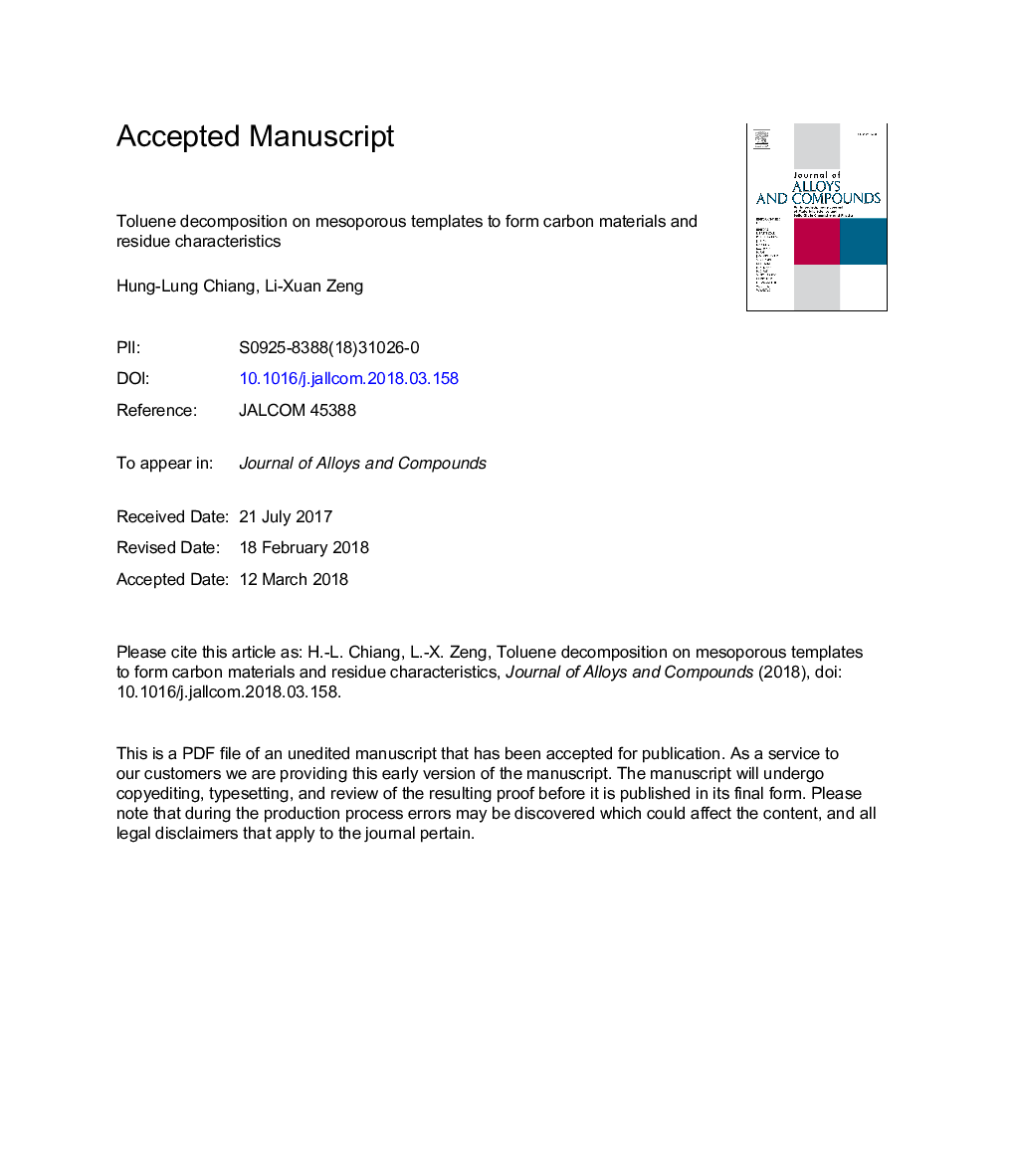| Article ID | Journal | Published Year | Pages | File Type |
|---|---|---|---|---|
| 7992542 | Journal of Alloys and Compounds | 2018 | 35 Pages |
Abstract
Santa Barbara Amorphous-15 (SBA-15) was selected as the template and Ni as the catalyst. The BET surface areas of SBA-15 and Ni-SBA-15 were 626â¯Â±â¯55 and 458â¯Â±â¯65â¯m2/g, respectively, and the pore sizes were 45â¯Â±â¯5 and 48â¯Â±â¯5â¯Ã
, respectively. These materials were identified as mesoporous and were composed of a series of small rods into organized bundles and an orderly hexagonal structure. Carbon material was synthesized at 750-950â¯Â°C using toluene as the carbon source on the templates. Results showed that the average pore diameter increased with a decrease in BET surface area and pore volume for the formation of carbon materials on SBA-15 and Ni-SBA-15. Only soot particles remained on the surface of SBA-15, but toluene accompanied by Ni-SBA-15 formed carbon nanotubes at 850 and 950â¯Â°C. There was less than 15% toluene to form carbon materials on the templates, and most of the toluene decomposed to form tar and exhaust gas. During toluene pyrolysis, benzene, ethyl toluene, toluene, and xylene were the main VOCs in the gas phase. Naphthalene and pyrene were the primary PAHs during toluene breakdown on SBA-15 and Ni-SBA-15. The work indicates that the Ni catalyst could decrease VOC concentration and enhance the formation of carbon materials.
Related Topics
Physical Sciences and Engineering
Materials Science
Metals and Alloys
Authors
Hung-Lung Chiang, Li-Xuan Zeng,
